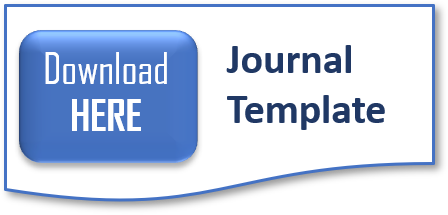Prediction Analysis of Literacy Numeracy and Technology Adaptation Abilities of Students Who Participate in Teaching Campuses Using the KNN Algorithm
DOI:
https://doi.org/10.59934/jaiea.v3i2.437Keywords:
Literacy, Numeracy, Teaching Campus, Technology Adaptation, Independent CampusAbstract
Literacy and numeracy skills, technological adaptation carried out by students during the Ministry of Education and Culture's campus teaching program are influenced by the limited competencies possessed by students which are not in accordance with the study program and learning can be influenced by location, network and distance to school, influencing independent campus program activities which are less effective. and efficient in teaching. So the learning and teaching process when students are on site inspection is primarily and foremost when students carry out observations at the target school. Literacy is the process of training students in the knowledge of reading techniques. Numeracy is the process of training students in knowledge of counting techniques and technological adaptation which plays a very important role in influencing digital literacy and numerization. Students and teachers still experience difficulties in the field of hardware technology and many still have low knowledge in carrying out and implementing technological adaptation in schools. with location, network and distance for schools in remote areas. Higher education greatly influences the teaching competence of students who take part in campus teaching programs. So students carry out literacy, numerization and technology adaptation programs according to their study program. Assist the campus in analyzing the campus teaching competency of the Ministry of Education, Culture and Research and Technology's campus teaching program using the K-Nearst Neighbor algorithm. By predicting the level of teaching competency, students in the campus teaching program can know the teaching competency abilities of students who take part in the campus teaching program . Based on testing using 35 test data, the value K = 3 predicts the level of teaching quality and competency so that the system accuracy is 75%, proven by testing the Python programming language system.
Downloads
References
A.Waldi, N. M. Putri, I. Indra, V. Ridalfich, D. Mulyani, and E. Mardianti, “Peran Kampus Mengajar dalam Meningkatkan Literasi, Numerasi dan Adaptasi Teknologi Peserta Didik Sekolah Dasar di Sumatera Barat,” J. Civ. Educ., vol. 5, no. 3, pp. 284–292, 2022, doi: 10.24036/jce.v5i3.725.
Nizam, “MBKM Guidebook,” pp. 1–42, 2020.
F. P. N. Wahyuni and D. Tranggono, “Upaya dalam Meningkatkan Literasi, Numerasi, dan Adaptasi Teknologi Siswa melalui Program Kampus Mengajar 4 di SMP Widya Gama Mojosari,” J. Pengabdi. Nas. Indones., vol. 4, no. 1, pp. 125–133, 2023, doi: 10.35870/jpni.v4i1.128.
T. Trismawati et al., “Adaptasi Teknologi Informasi Pembelajaran untuk Meningkatkan Efektifitas Keberhasilan Pembelajaran Daring di SDN Sumber Wetan 1 Probolinggo,” J. Abdi Panca Marga, vol. 3, no. 1, pp. 46–50, 2022, doi: 10.51747/abdipancamarga.v3i1.986.
M. Reza et al., “Artifical Intelligence : Image Processing & Application with Python,” Semin. Nas. Pengabdi. Masy. LPPM UMJ, vol. 1, no. 1, pp. 1–8, 2022, [Online]. Available: http://jurnal.umj.ac.id/index.php/semnaskat.
G. Prahmana and K. Annatasia Br Sitepu, “Knearst Algorithm Analysis – Neighbor Breast Cancer Prediction Coimbra,” J. Artif. Intell. Eng. Appl., vol. 1, no. 3, pp. 226–230, 2022, doi: 10.59934/jaiea.v1i3.97.
M. Tohir, “Buku Panduan Merdeka Belajar-Kampus Merdeka,” 2020.
Dewayani, Sofie, dkk. Inspirasi Pembelajaran yang Menguatkan Literasi Pada Mata Pelajaran Bahasa Indonesia untuk Jenjang Sekolah Menengah Pertama. Direktorat Sekolah Menengah Pertama. 2021.
Susanto, Dicky, dkk. Inspirasi Pembelajaran yang Menguatkan Numerasi Pada Mata Pelajaran Matematika untuk Jenjang Sekolah Menengah Pertama. Direktorat Sekolah Menengah Pertama. 2021.
A. R. Isnain, J. Supriyanto, and M. P. Kharisma, “Implementation of K-Nearest Neighbor (K-NN) Algorithm For Public Sentiment Analysis of Online Learning,” IJCCS (Indonesian J. Comput. Cybern. Syst., vol. 15, no. 2, p. 121, 2021, doi: 10.22146/ijccs.65176.
Downloads
Published
How to Cite
Issue
Section
License
Copyright (c) 2024 Journal of Artificial Intelligence and Engineering Applications (JAIEA)

This work is licensed under a Creative Commons Attribution-NonCommercial-ShareAlike 4.0 International License.











